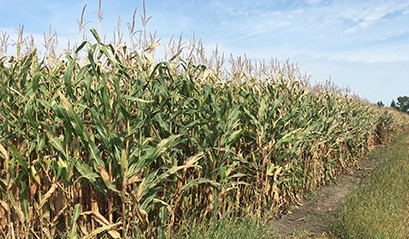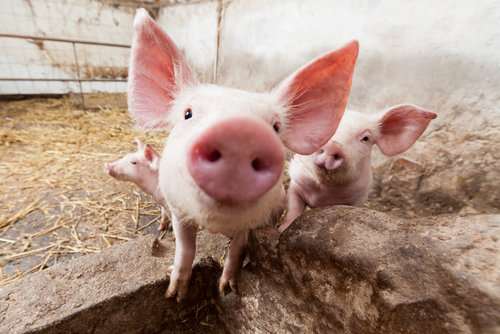Canada has fewer farms but they are larger in size
By Diego Flammini
Assistant Editor, North American Content
Farms.com
The number of farms in Canada has decreased since 2011 but the acreage of farms has increased, according to the 2016 Census of Agriculture.
The data counted 193,492 farms across the country, down from 205,730 farms recorded in the 2011 Census.
The average size of a Canadian farm in 2016 was 820 acres, compared to 779 acres in 2011.
The highest number of Canadian farms per size are between 10 and 69 acres, with 32,036 falling into that category.
And another 9,089 farms are 3,520 acres or larger.
Total farm area is measured at 158.7 million acres, with 93.4 million acres used for crops.
Farmers are getting younger and the number of female farmers is growing
271,935 people identified themselves are farm operators according to the 2016 Census. The total number is down from 2011 but the number of farmers under 35 appears to be increasing.
24,850 farmers across Canada are 35-years-old and younger, up from 24,120 in 2011.
“This was the first absolute increase in this category of operators since 1991,” Stats Canada said in its release.
There are 77,970 female producers in Canada. Most of the women are between 35 and 54 years of age.
Larger farms mean larger equipment
The total number of tractors over 149 PTO HP jumped from 85,681 in 2011 to 104,990 in 2016. The number of tractors smaller than 149 PTO HP fell to 546,276 in 2016.
In total, farmers spent $53.9 billion leasing or buying equipment in 2016, a 15.4 per cent increase since the 2011 Census of Agriculture.
Renewable energy gaining popularity
About 10,255 farms have a renewable energy system, Stats Canada reports. Of those farms, about 85 per cent had solar panels and 15.7 per cent had wind turbines.
Approximately 5,180 farms in Ontario had renewable energy systems, the most of any province. 4,428 farms (85.5 per cent) of these respondents said they use solar panels compared to 906 with wind turbines.
PROVINCIAL BREAKDOWN OF THE 2016 CENSUS OF AGRICULTURE
Newfoundland and Labrador
- Agricultural operations employed 1,228 people in 2015.
- 407 farms recorded, down 20.2 per cent from 2011, which is the largest decline in Canada.
- Highest measured proportion of direct marketing, with 32.4 per cent of farms selling at least one commodity directly to consumers.
- Total farm area decreased 8.5 per cent to 70,757 acres and cropland decreased 4.8 per cent to 19,619 acres.
Prince Edward Island
- Agricultural operations employed 4,235 people in 2015.
- 1,353 farms reported in the Census, down 9.5 per cent from 2011.
- Total farm area decreased 3.2 per cent from 2011 to 575,490 acres in 2016.
- Land under cultivation for potatos was measured at 83,326 acres in 2016, a 3.7 per cent drop from 2011, but still the largest in Canada.
Nova Scotia
- Agricultural operations employed 7,948 people in 2015.
- 3,478 farmers recorded in the Census, down 10.9 per cent from 2011.
- Total farm area decreased 10.1 per cent from 2011 to 915,657 acres.
- Corn for grain and corn for silage are the largest crops in the province.

New Brunswick
- Agricultural operations employed 6,262 people in 2015.
- 2,255 farms were recorded, down 13.6 per cent from 2011.
- Total farm area dropped by 10.9 per cent to 835,329 acres in 2016 – the largest provincial decrease in Canada.
- New Brunswick farmers planted 46,240 acres of potatoes in 2016.
Quebec
- Agricultural operations employed 55,866 people in 2015.
- Quebec accounts for about 90 per cent of all maple taps in Canada.
- 28,919 farms recorded during the Census, down 1.8 per cent from 2011.
- Quebec had more pigs than any province at 4.5 million head in 2016.
- Number of dairy cows decreased to 347,038 head in 2016.
- Total farm area fell by 1.9 per cent, from 2011 to 8.1 million acres in 2016.
- Corn for grain was the largest crop in 2016.

Ontario
- 49,600 farms, or more than ¼ of farms recorded, were in Ontario.
- Agricultural operations employed 82,058 people in 2015.
- Soybeans and corn for grain were the largest crops in 2016.
- Ontario accounted for almost 60 per cent of the national corn for grain area, and almost 50 per cent of national soybean area.
- Total farm area in Ontario fell from 2011, down to 12.3 million acres.
Manitoba
- Manitoba had the largest number (10.8 per cent) of farm operators under 35 years old.
- Agricultural operations employed 18,737 people in 2015.
- 14,791 farms were recorded, down 6.8 per cent from 2011.
- Women accounted for 23.8 per cent of farm operators, up from 23.6 per cent in 2011.
- Total farm area was 17.6 million acres in 2016, a 2.1 per cent drop from 2011
- Average farm size grew from 1,135 acres to 1,193 acres.
- Canola was the largest crop in Manitoba in 2016.
- Number of pigs rose to 3.4 million head in 2016.
Saskatchewan
- Agricultural operations employed 25,927 people in 2015.
- 34,523 farms were recorded, down 6.6 per cent from the 2011 Census.
- Total farm area remained almost the same at 61.6 million acres in 2016.
- Rented farm area rose by 15.8 per cent to 17 million acres.
- Canola was the leading crop in 2016.
- ¼ of Saskatchewan’s 45,350 farm operators were women.
- 9.7 per cent of operators were under 35 years old.

Alberta
- Agricultural operations employed 33,498 people in 2015.
- 40,638 farms were recorded, down 6 per cent from 2011.
- Alberta has the second-largest number of farms (after Ontario).
- 41.6 per cent of Canada’s cattle herd is in Alberta.
- Number of dairy cows fell to 80,014 head in 2016.
- Number of pigs rose to 1.5 million head.
- Total farm area in Alberta was 50.3 million acres in 2016.
- Canola was the largest crop.
British Columbia
- Agricultural operations employed 44,556 people in 2015.
- 17,528 farms recorded, down 11.3 per cent from 2011.
- 26,430 farm operators were identified in British Columbia, with 37.5 per cent being women – the highest percentage in Canada.
- 6.9 per cent of operators are under 35 years old.
- Total farm area decreased almost 1 per cent from 2011 to 6.4 million acres in 2016.
- Average farm size grew from 327 acres in 2011 to 365 acres in 2016.
- Spring wheat was the largest crop in British Columbia.